Exhibitions, Projects

Bugfix the Brain
g.tec medical engineering GmbH (AT)
Imagine being able to think, hear, and feel – but not to move or communicate. The exhibition Bugfix the Brain focuses on patients who suffer from motor disabilities due to stroke or disorders of consciousness and shows state-of-the-art rehabilitation and assessment tools based on Brain-Computer Interfaces. Neurologists, physical therapists, caregivers and patients are welcome to test these brain rehabilitation technologies on themselves.
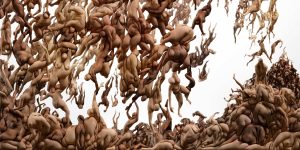
Human Limitations – Limited Humanity
The exhibition “Human Limitations – Limited Humanity” revolves around the relationship between humanity and the environment, and our limitations therein. What socio-ethical obligations arise from our present technologies and our ever-increasing interaction with nature?
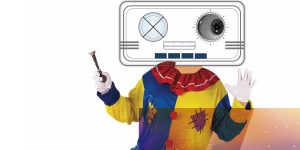
The Golden Age
Xintong Wang (CN)
The project aims to build a path for audiences to explore and understand empathy, both how it is designed and misused. The uncanny valley shows that to a certain extent, the more humanoid the form of a machine is, the more empathetic a human is.
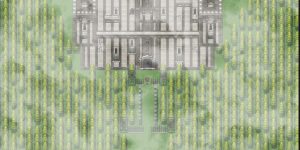
The Fortress
Andreia Batista (PT), André Fidalgo Silva (PT), Luís Morais (PT), Miguel Ribeiro (PT)
The Fortress is a story-driven video game for computers where choices and interactions explored within the game result in different outcomes. Its main mechanics correlate with social interactions: by switching between two characters with different personalities, the player needs to unravel the mystery of each puzzle/level of the fortress. The project was created under the aegis of the Multimedia Art Department and the Instituto Superior Técnico Master’s Degree in Games.

Curly Cable
Andrea Rebok (AT)
The kinetic installation *Curly Cable* celebrates the presence, function, and aesthetics of spiral cables.

CyberArts
Experience digital arts! CyberArts presents the most outstanding entries from the Prix Ars Electronica, the international competition of computer art now in its 20th year, at the OK Center of Contemporary Art.
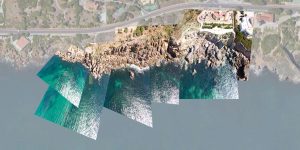
Frontiers || Territories
Joana Resende (PT)
Boundaries are constantly being changed, and those we find today may have already changed tomorrow. In a protected area of the Greater Lisbon area, aerial images are collected to build a map with open source software. These are shared through a website that is, itself, also a map, allowing for the visualization of economic, ecological and social while trying to see how well a territory / protected area is respected – “para mais tarde recordar” (for later recall).

The New Face of Physiognomy
Tiantian Xiang (CN)
Physiognomy is a discarded 19th-century pseudoscience. However, AI bias seems to be resurrecting it. Why is this happening again? This project investigates human trust in AI by exploring bias in facial analysis systems. It juxtaposes face analysis from AI mathematical models with judgements from the pseudoscience of physiognomy to draw parallels between these two biased forms of sense making.

As promised
Amir Bastan (IR)
In Tarkovsky’s *Nostalghia* Andrei meets and befriends a strange man named Domenico, who is famous in the village for trying to cross through the thermal waters of Bagno Vignoni with a lit candle. He claims that when finally achieving it, he will save the world. Before leaving, Domenico gives Andrei his candle and asks him if he will cross the waters for him with the flame. *As promised* is an interactive installation which responds to the candle scene in Tarkovsky’s Nostalghia. In order to watch the complete candle scene, the user has to spin the anamorphic cylinder’s cap, find the correct velocity and keep it constant.
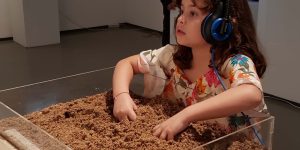
SandBox – Grains in Memory
Adriana Moreno (BR)
Sandbox is an interactive art installation that proposes continuous reflections on the human relationship between the sea and its identity paths. The installation consists of a corpus of sound memories based on the experiences of people who narrate their relationships of belonging with the sea. Memories – both “soundscapes”, a concept adapted from Schafer referring to sounds in the marine environment, and oral narratives recorded during fieldwork – are then revealed by moving wet sand in an instrumented box.


